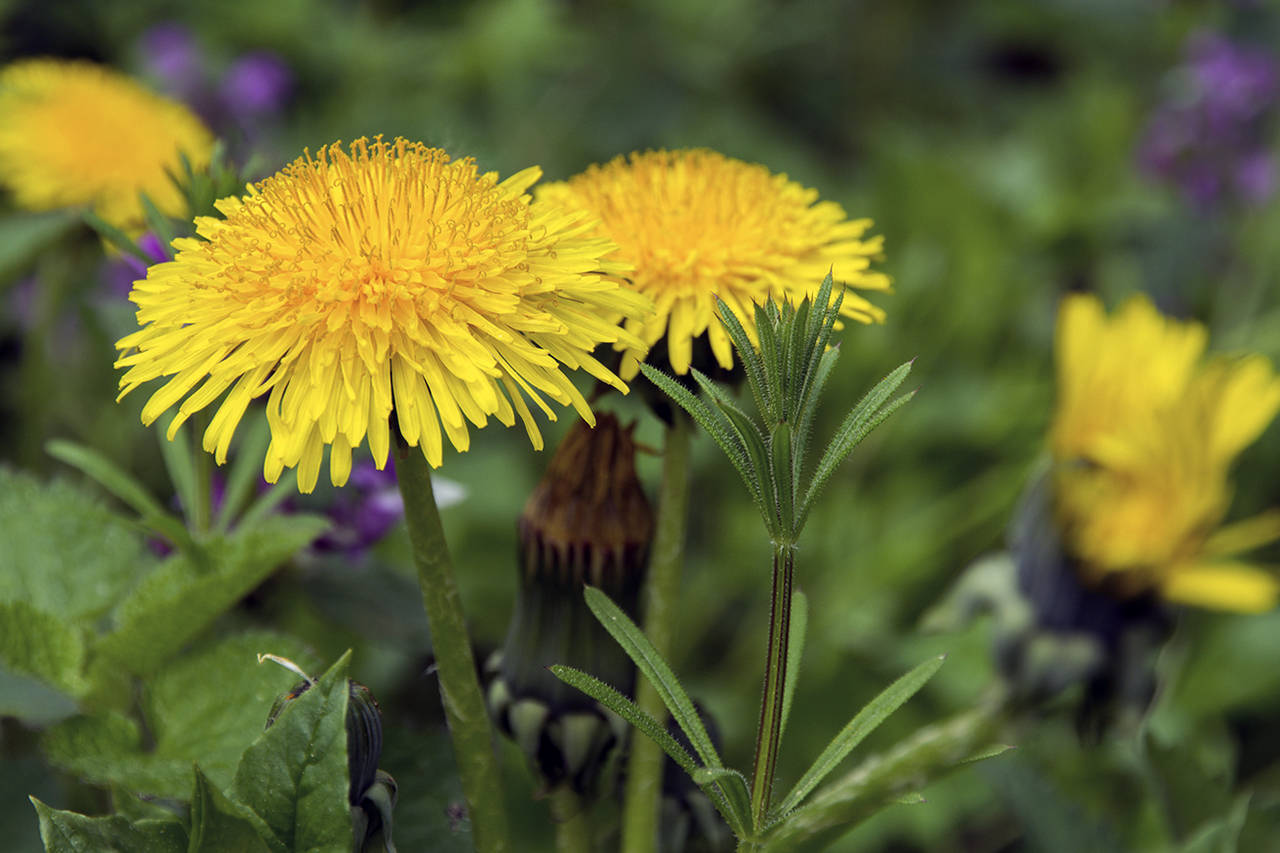By Dauna Koval
WSU Master Gardener
Exactly what is a weed? The most common answer, “a plant growing out of place,” is not enough.
Weeds are so competitive that they push out preferred plants. They are invasive, persistent and difficult to get rid of. There are whole books on how to identify, manage and get rid of them. Most every gardener has a particular nemesis and preferred way of dealing with it and other invaders.
My particular curse is the dandelion and all its impersonators. They have destroyed every lawn and groundcover I’ve tried. They overpower the lovely annuals in my flowerbeds. They’re supposed to be edible, but their dried roots make a terrible-tasting coffee substitute. I once tried eating their leaves (yuck!) and brewing dandelion wine, which my father tried to convince me was worth the complexity involved. Not! Every batch failed. My blackberry wine was so much better.
I am unwilling to plant yellow flowers in my garden now. My granddaughter isn’t allowed the childhood joy of blowing away the fairy-like floating seeds anymore. My major weed eradication technique is deep-digging to get the entire reproducing taproot, whether it’s actually there or not. Dandelions. I hate them!
All weeds are ubiquitous, but as I have been practicing identifying and learning ways to eliminate them, I’ve started to pay attention to where they grow and why.
Weed knowledge could come in handy. They might even produce information I usually get by sending off my soil samples to a lab, and certainly much faster. Of course, they’ll have to talk fast, before I pull them out!
So, what are the dandelions that I have everywhere telling me? In a way, they don’t say much. Dandelions are adaptable and pervasive. They can grow in most any soil. They will invade areas of poor, disturbed soil, but in my garden they flourish profusely, telling me my soil is fertile and healthy — so much so that I can barely keep up with them. Their long taproots can actually improve drainage and loosen up harder clay soils.
More unexpectedly, dandelions reveal low calcium, which is needed to hold plant cell walls together. Deficiencies cause distortions in new root tips and young leaves because cells can’t hold their shape. Adding bone meal or wood ash will help to promote healthier flowers, vegetables, etc., that you plant in an area where you are battling dandelions.
Sheep sorrel and hawkweed, both of which I have, are also acid-soil indicators. Come to think of it, I don’t have much of these in my vegetable garden, where I have added lime to sweeten the soil for broccoli, beets, lettuce and spinach. I’m always pulling chickweed from there, which is an alkaline indicator.
So, let’s take a look at a few others I find myself pulling or digging:
Burdock (Arctium minus): Soil low in calcium, high in potassium, often sandy. Add bone meal to increase calcium and lots of organic matter to balance out excessive potassium, but mostly get out the gloves and pull before the seed pods mature.
Common horsetail (Equisetum aravense): Poorly drained, acid soil deficient in calcium.
Creeping buttercup (Ranunculus repens): Wet soil that forms temporary pools. (That would be good to know if you find it after the pool has dried up.)
Curly dock (Rumex crispus): Wet, acid, compact soil, low in calcium, high in magnesium, phosphorus and potassium.
English ivy (Hedera helix): Wet, poorly drained soil that dries during the winter months.
Mosses (Bryophyta): Poorly drained, wet, compact, acid soil.
Shotweed (Cardamine oligosperma): Grows in every kind of wet soil, fertile or not.
I pull weeds more slowly now and think about what they are saying — except dandelions. I still don’t care for them!
* * *
Dauna Koval, a Master Gardener since 2016, is leaving her Renton garden of 15 years to retire to Ocean Shores. The dandelions have followed her.


